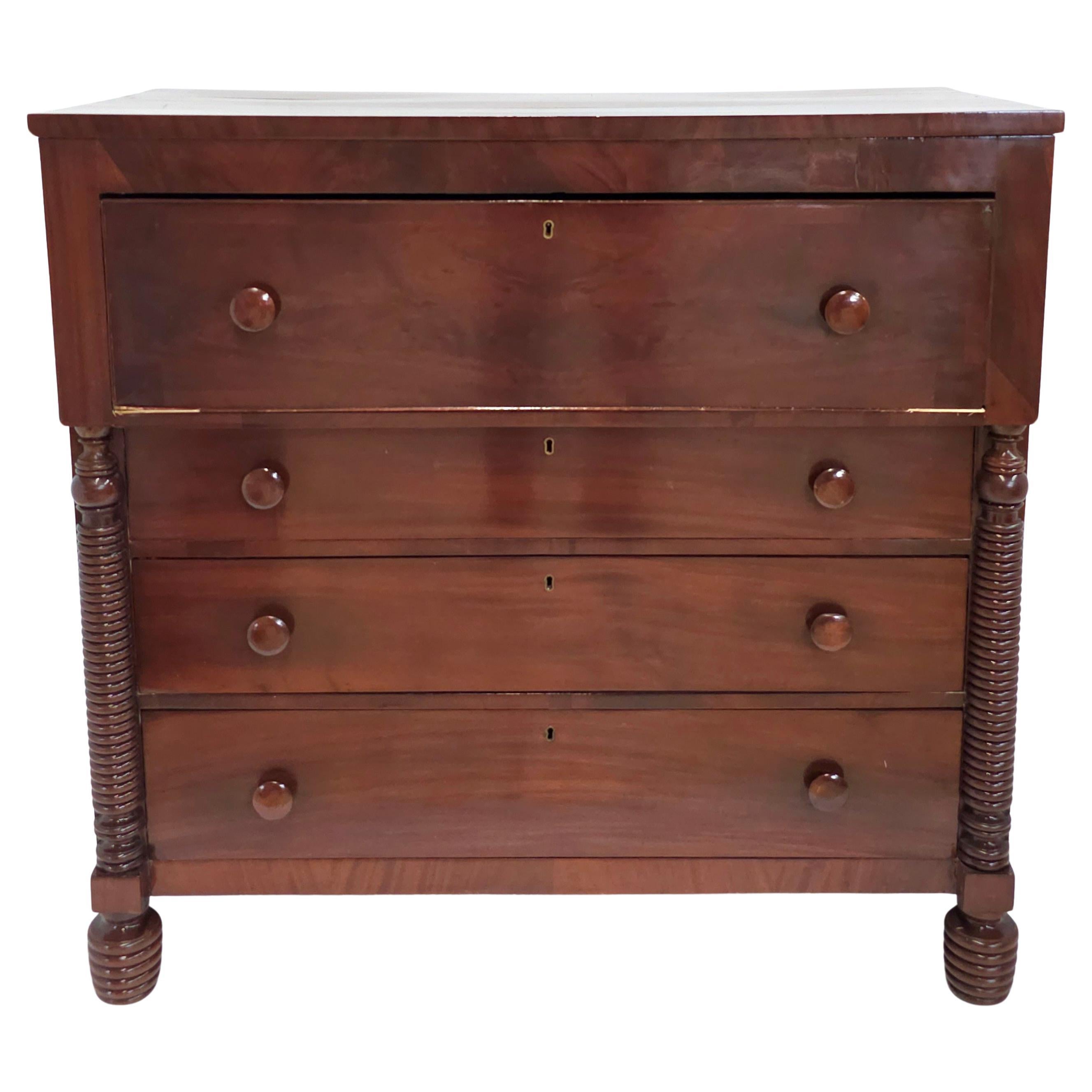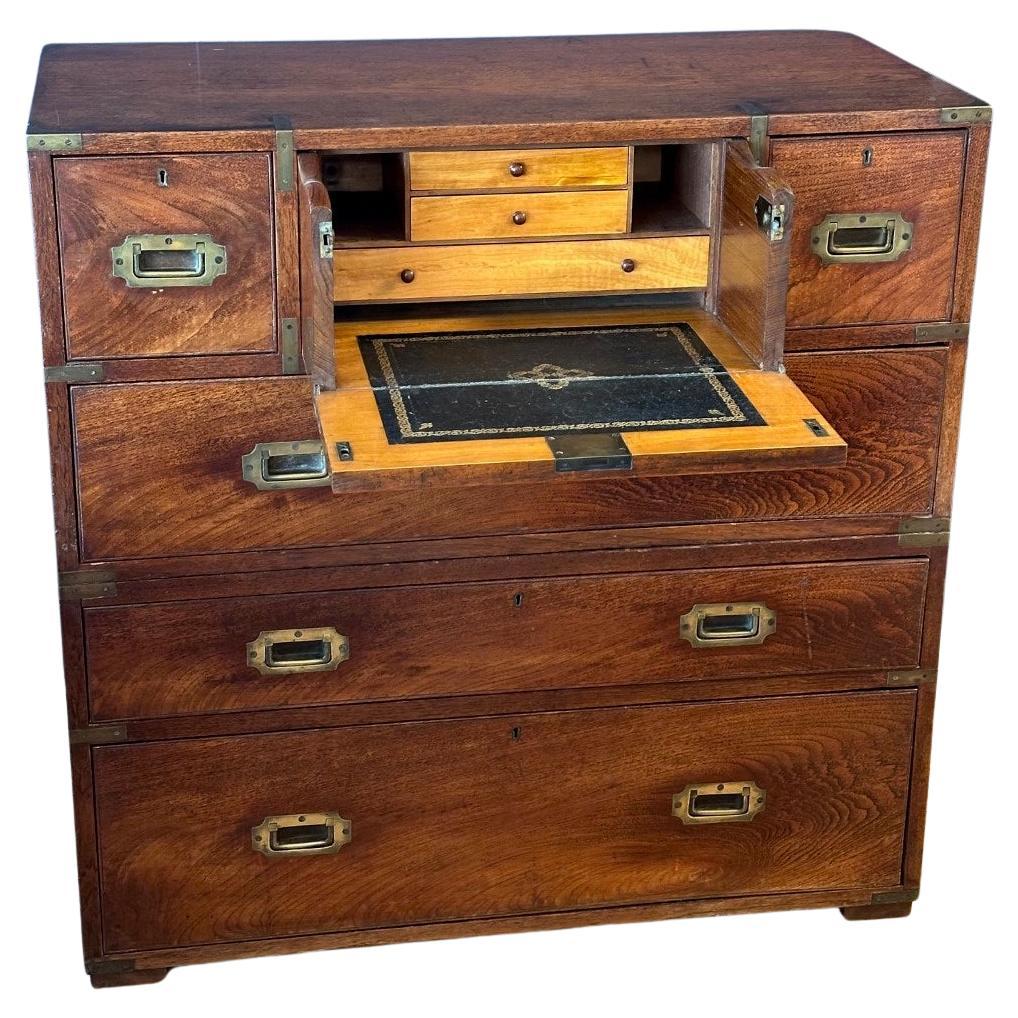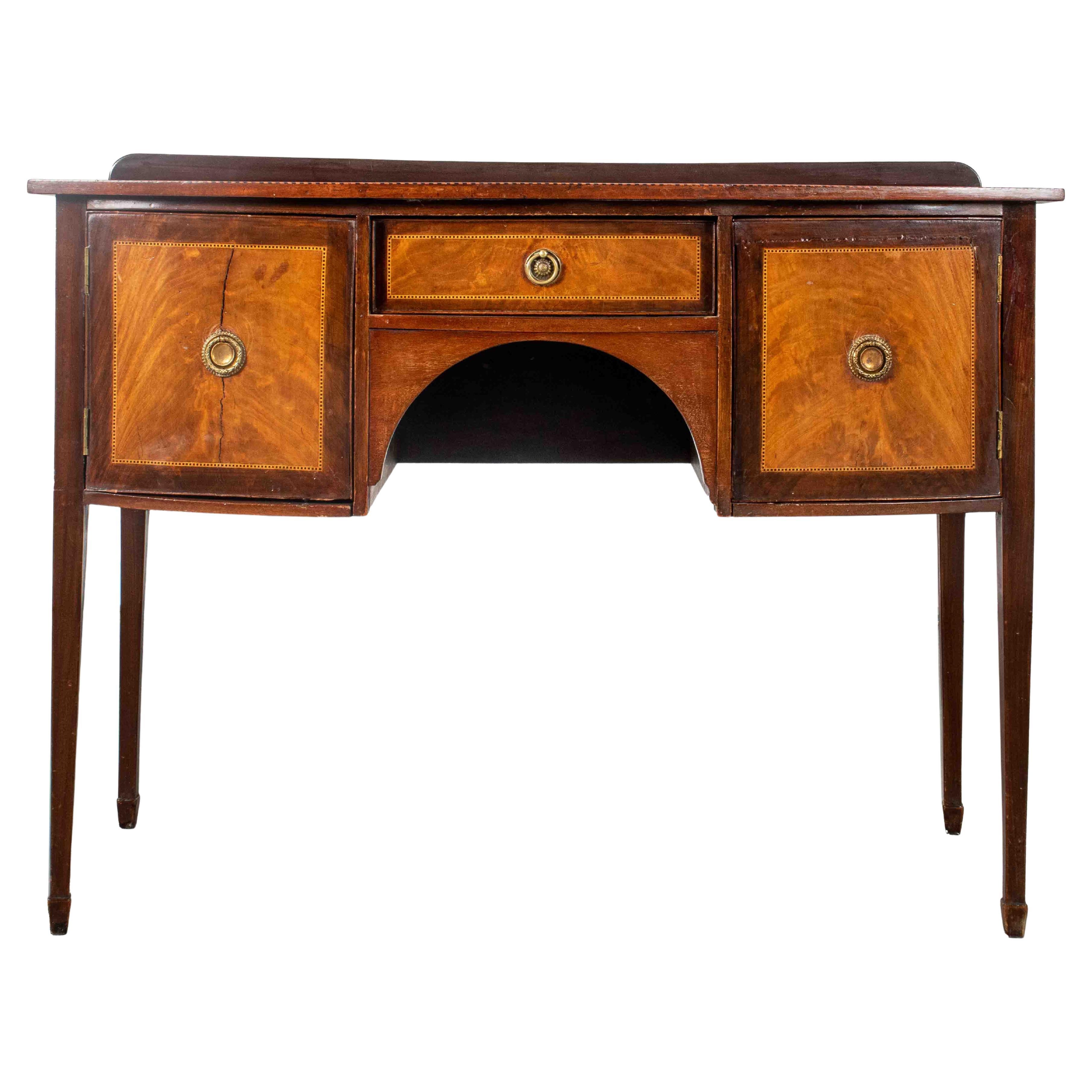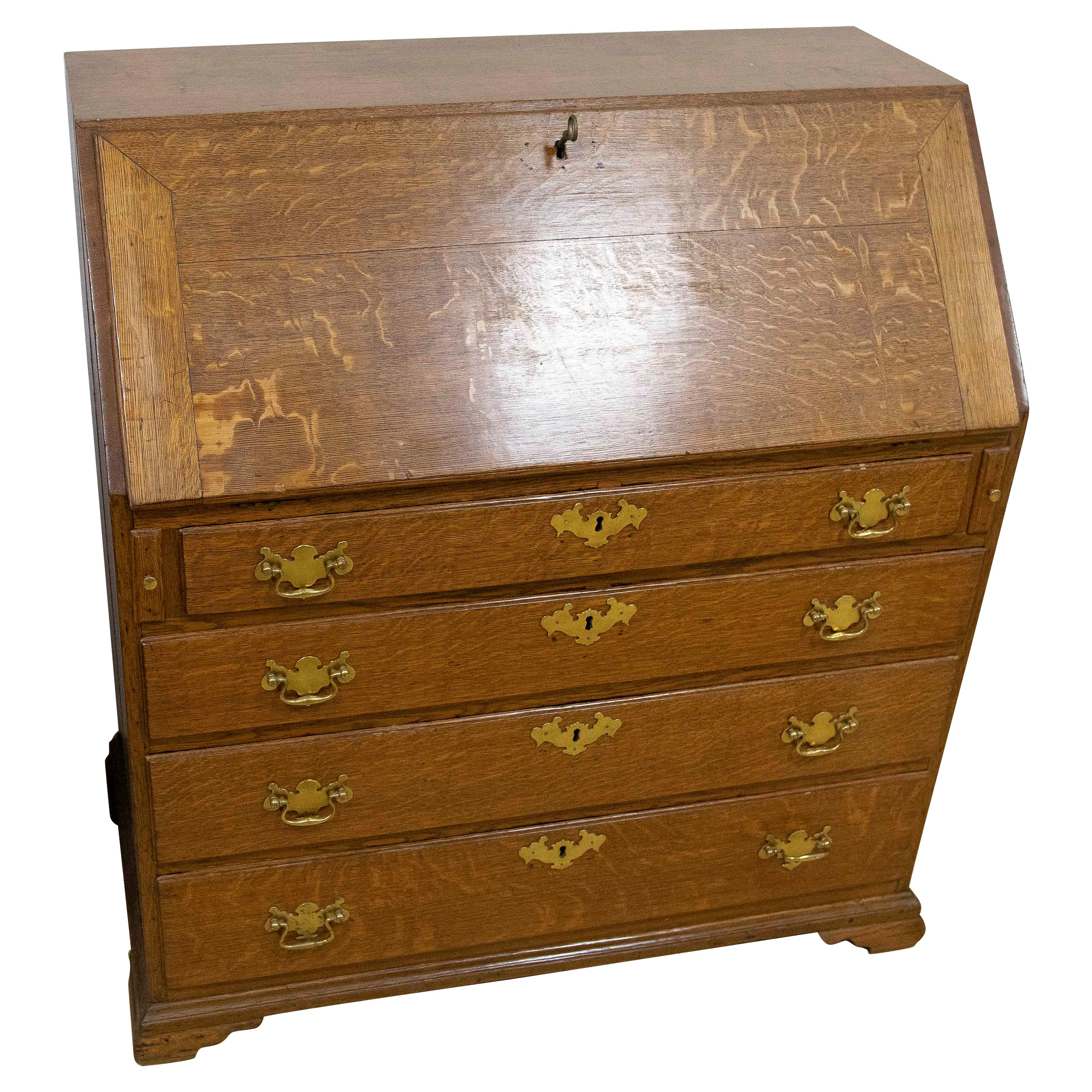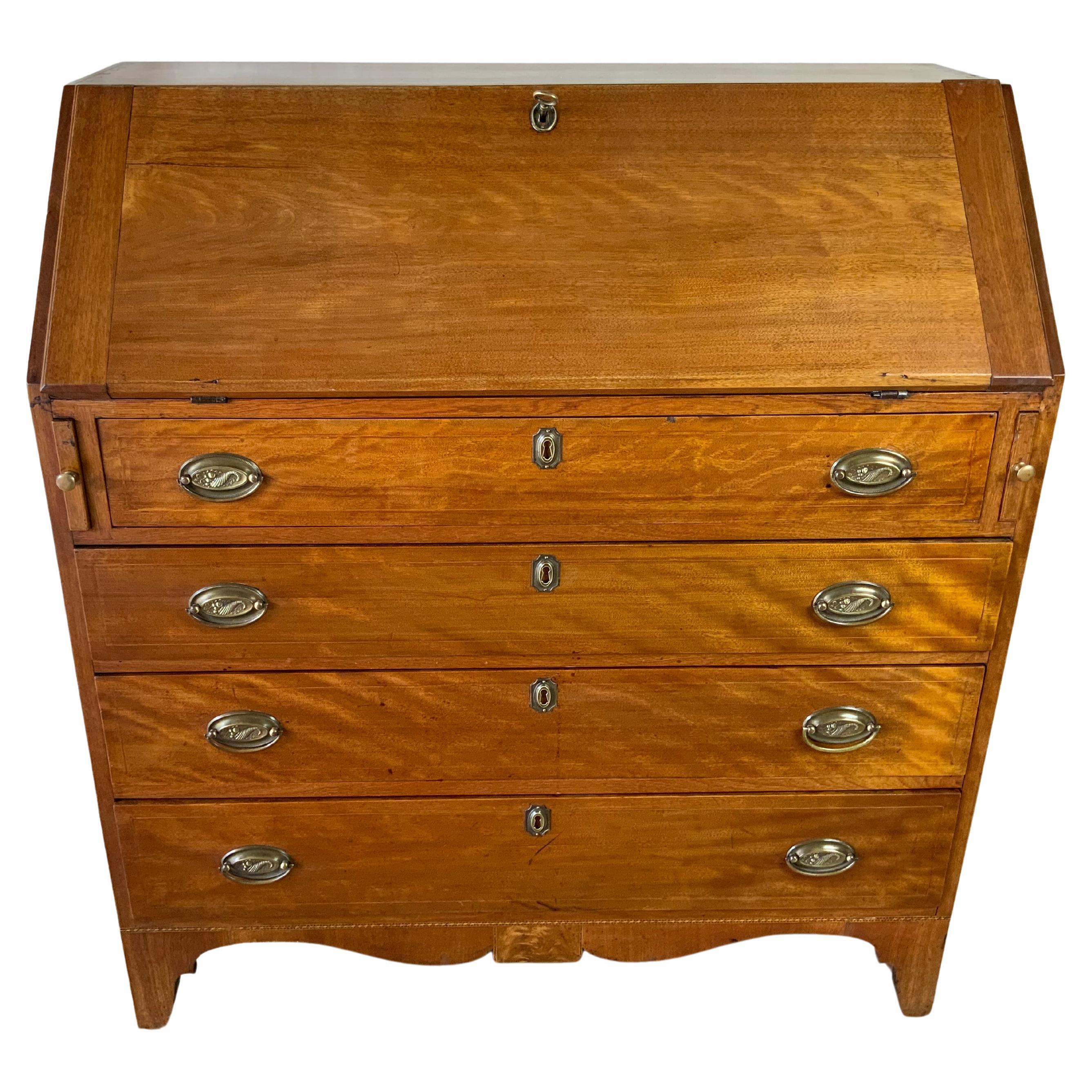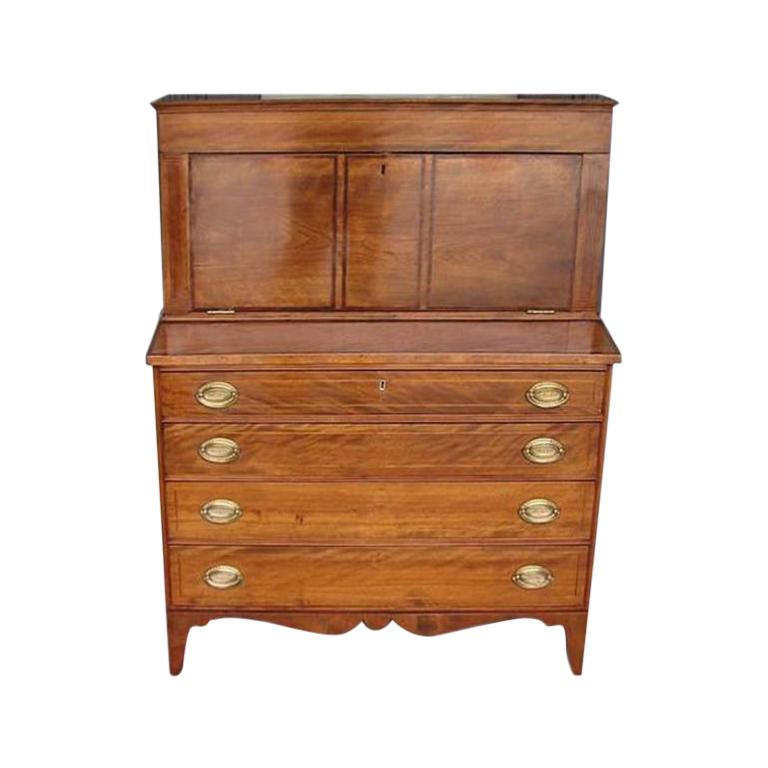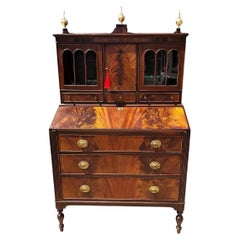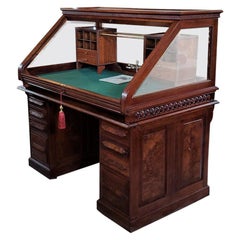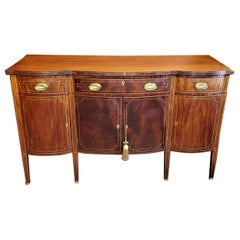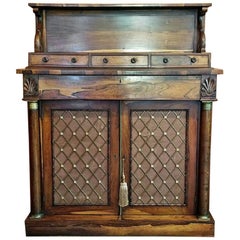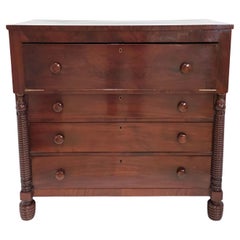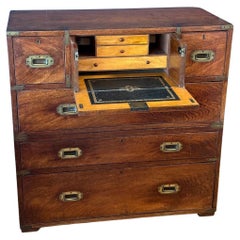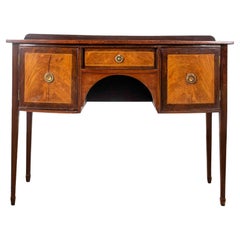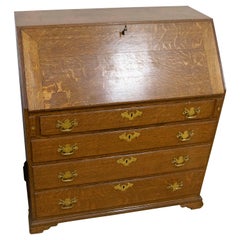Items Similar to American Hepplewhite Virginian Secretary Chest with Civil War Provenance
Want more images or videos?
Request additional images or videos from the seller
1 of 21
American Hepplewhite Virginian Secretary Chest with Civil War Provenance
$16,000
£11,872.62
€13,829.98
CA$22,272.12
A$24,802.01
CHF 12,908.08
MX$305,805.79
NOK 164,394.22
SEK 154,514.63
DKK 103,188.78
Shipping
Retrieving quote...The 1stDibs Promise:
Authenticity Guarantee,
Money-Back Guarantee,
24-Hour Cancellation
About the Item
PRESENTING a FANTASTIC and HISTORIC Early 19C American Hepplewhite Virginian Secretary Chest with OUTSTANDING Provenance.
This Secretary Chest was made in Virginia in the Early 19th Century, circa 1810.
It is made of cherry, walnut and maple and is most definitely in the Hepplewhite Style of the period, with it’s original Hepplewhite brass drawer pulls.
IT IS A REALLY INTRIGUING AND HISTORIC PIECE, ESPECIALLY, WHEN VIEWED IN CONTEXT WITH IT”S AMAZING PROVENANCE!
This piece was originally owned by Major William Alexander Obenchain who ‘hailed’ from the State of Virginia.
He was an engineer and was in the Virginia Corps of Engineers during the Civil War and served on General Robert E. Lee’s staff. It was acquired by him before the Civil War and we believe that this piece was on campaign with him during the War. We know for a fact that he fought at the Richmond Campaign in 1864, as we have, in our Collection, his original Field Map for that Campaign which ended the War.
It has remained in family ownership ever since.
It has come directly from the Family Estate, together with other VERY IMPORTANT items belonging to Major Obenchain and other IMPORTANT items that belonged to his wife, Eliza Calvert Hall-Obenchain. ALL these items contained in the Collection, are listed/posted individually on our Website.
The top drawer is on retractable curved side hinge supports and pulls outwards and drops to reveal a secretary and writing area.
The Bureau/Secretary Gallery has 6 drawers and 6 cubbies, a central tabernacle door with another drawer and 2 cubbies and this is flanked by 2 secret pull out compartments.
The central tabernacle door has it’s original key and working lock.
Closed, it is almost ‘flush’ like the rest of the drawers, with some very minor bowing through age.
The 3 drawers underneath are graduated in size and it ends with a serpentine shaped base and sits on four hand carved legs with original metal casters, marked ‘Universal 3’.
It has it’s original brasses and hardware throughout, save the addition to 2 contemporary replacement brass hinges to the drop down desk front, as the original hinges were broken, could not be repaired and were not supporting the weight of the drop down leaf.
Some minor repairs but not noticeable.
Otherwise, the piece is in it’s entirely, ORIGINAL condition!
What makes this piece even MORE INTRIGUING and APPEALING HISTORICALLY, are the 2 ‘historic’ circular holes on the piece:-
(1) in the back of the piece as seen in the photos. This hole is not symmetrical or fully round and appears to serve no purpose to the piece whatsoever. Sometimes, pieces have holes for wiring for lighting, put in them over the years, but this one never had such lighting or, indeed, any such explanation for this hole, AND
(2) the rear hole is replicated, in the corner portion of the bottom drawer and someone (a very long time ago) has used a tin can top, to cover the hole in the back of the drawer. The tin can top is period to the Civil War Era and is embossed “Minimum Volume 1 Pint”.
Our conclusion, is that (whilst we are, by no means ballistic experts) that these holes were created by musket balls, fired during one of the Major’s campaigns in the Civil War. It is entirely conceivable that this piece, being strapped into a covered wagon for carriage, would have been on it’s side. We are of the opinion that both holes, were caused or created by a musket ball entered the chest trough the base and back. We also believe that ‘the Major’, used what he had at his disposal on the battlefield, namely, a tin can lid to repair the hole in the drawer.
SO THIS PIECE IS A VERY SPECIAL PIECE OF US HISTORY, INDEED!
NOT ONLY IS IT AN EARLY 19th CENTURY AMERICAN PIECE, WITH A CONNECTION TO THE STATE OF VIRGINIA, THE CIVIL WAR, HISTORIC & IMPORTANT FIGURES IN THAT WAR AND IMPECCABLE PROVENANCE AND HISTORY!
IT IS TRULY UNIQUE!
William Alexander Obenchain. Born April 27, 1841 at Buchanan, Botetourt Co., Virginia.
Parents: Thomas Jefferson Obenchain and Elizabeth Ann Sweetland.
Entered VMI on July 18, 1859 as a member of the VMI (Virginia Military Institute) Class of 1862 and was graduated (1st in his class) in December 1861–this class was graduated early due to the Civil War.
Served in various capacities as an Engineer officer throughout the Civil War. At rank of Captain he was a senior ranking officer in the Virginia Corps of Engineers and served on Gen. Robert E. Lee’s Staff.
He was promoted to the rank of Major, for meritorious conduct near Richmond in 1864.
Post-War Career- Educator.
Taught at Hillsborough Military Academy (NC), Pittsboro (NC) Military Academy, Western Military Acad. (New Castle, KY), University of Nashville, Ogden College, Bowling Green, KY.
Married Eliza Calvert Hall (famous Author) of Bowling Green in 1885.
Obenchain died August 17, 1916 at his home in Bowling Green, age 75.
Provenance: From the Estate of Major W.A. Obenchain.
Condition: Very good overall. 2 new hinges added to drop down desk. Some minor repaired cracks, blemishes etc from age and use. No key. Otherwise in very good ORIGINAL condition.
Dimensions: 44.25 inches Tall, 42.75 inches Wide and 20.25 inches Deep with secretary drawer closed.
33.25 inches Deep with secretary drawer fully open. Knee Clearance on desk is 32.2 inches.
- Similar to:George Hepplewhite (Maker)
- Dimensions:Height: 44.25 in (112.4 cm)Width: 42.75 in (108.59 cm)Depth: 20.25 in (51.44 cm)
- Style:American Classical (Of the Period)
- Materials and Techniques:
- Place of Origin:
- Period:
- Date of Manufacture:1810
- Condition:Replacements made: 2 new hinges added to drop down desk front. Repaired: Some minor repaired cracks, blemishes etc from age and use. Wear consistent with age and use. Minor losses. Minor structural damages. Minor fading.
- Seller Location:Dallas, TX
- Reference Number:1stDibs: LU3978137126802
About the Seller
4.9
Vetted Professional Seller
Every seller passes strict standards for authenticity and reliability
Established in 2015
1stDibs seller since 2018
389 sales on 1stDibs
Typical response time: 1 hour
- ShippingRetrieving quote...Shipping from: Dallas, TX
- Return Policy
Authenticity Guarantee
In the unlikely event there’s an issue with an item’s authenticity, contact us within 1 year for a full refund. DetailsMoney-Back Guarantee
If your item is not as described, is damaged in transit, or does not arrive, contact us within 7 days for a full refund. Details24-Hour Cancellation
You have a 24-hour grace period in which to reconsider your purchase, with no questions asked.Vetted Professional Sellers
Our world-class sellers must adhere to strict standards for service and quality, maintaining the integrity of our listings.Price-Match Guarantee
If you find that a seller listed the same item for a lower price elsewhere, we’ll match it.Trusted Global Delivery
Our best-in-class carrier network provides specialized shipping options worldwide, including custom delivery.More From This Seller
View AllHepplewhite Style Apprentice Miniature Secretary Chest
Located in Dallas, TX
Presenting a stunning Hepplewhite style apprentice miniature secretary chest.
Made in England circa 1900-10 this piece is a miniature of much la...
Category
Early 20th Century English Hepplewhite Secretaires
Materials
Mahogany
19th Century American Cutler & Sons Model 1 Roll Top Desk
Located in Dallas, TX
Presenting a glorious piece of Americana namely, a 19th century American Cutler & Sons model 1 roll top desk.
This is the prototype of the well-known Cutler & Sons patented desk...
Category
Antique Late 19th Century American American Craftsman Desks
Materials
Walnut
Late 18C American Sheraton Sideboard by Duncan Phyfe - Important
Located in Dallas, TX
We have the pleasure to present to you a STUNNING and IMPORTANT Late 18th century American Sheraton Sideboard, made circa 1788/89, in New Y...
Category
Antique Late 18th Century American Sheraton Sideboards
Materials
Birch, Mahogany, Satinwood, Walnut
18th Century British Regency Bureau Chiffonier in Manner of Gillows
By Gillows of Lancaster & London
Located in Dallas, TX
Fantastic piece in impeccable condition. Regency exotic hardwood bureau or secretaire desk or cabinet of lovely proportions.
From circa 1790. The top portion consists of an open columned pelmet and shelf with a series of drawers underneath. All made of rosewood. The bottom section is a double door cabinet with double shelving inside. The façade of the doors consist of glorious gilded latticework frames with rose shaped connectors and with brown silk blinds...
Category
Antique Late 18th Century English Regency Cabinets
Materials
Rosewood
19th Century Hampton & Sons Chinese Chippendale Cylinder Desk
By Thomas Chippendale
Located in Dallas, TX
Presenting an absolutely gorgeous mid-late 19th century British Chinese Chippendale style cylinder desk from the renowned maker of Hampton & Sons, of Pall Mall, London.
This stunnin...
Category
Antique Late 19th Century English Chinese Chippendale Desks
Materials
Mahogany
18th Century George II Miniature Campaign Bureau Chest on Later Chest Stand
Located in Dallas, TX
PRESENTING A GORGEOUS and beautifully proportioned Mid-18th Century George II Miniature Campaign Bureau Chest on later Chest/Stand.
Mid-18th century, made in Britain, circa 1760-1770.
The bureau chest sits on a later stand/chest, that we estimate is late 19th century, circa 1860-1880. It is also British.
We believe that the primary wood in this piece is either Elm or Sycamore with mahogany elements.
Classic Campaign style miniature Bureau Chest, with its ORIGINAL George II brass hardware, including handles on the sides for easy carriage, which is what proves to us, that this chest was made for campaign purposes.
The brasses are GORGEOUS and are classically George II in style, design and construction.
The quality, thickness and patina to the brasses, is what ‘initially’ tells us, that this is a ‘period’ piece and not a reproduction.
Likewise, the dovetailing detail to the drawers, tells us that this was a hand crafted piece and certainly NOT machine made.
The secondary woods appear to be a combination of oak and pine, exactly as one would expect.
The central keyhole escutcheons are FANTASTIC and are in the form of a pair of opposing ‘lyres’.
We have never seen anything like them!
Beautiful natural patina!
The ‘brasses’ look like they have been polished a ‘little too often and vigorously’, over the piece’s 250+ years history … BUT … the bonus of this cleaning is the creation of a rather appealing, '2 Tone effect’, on the patina of the wood around the brasses.
The Bureau has a flat gallery...
Category
Antique 18th Century English George II Secretaires
Materials
Brass
You May Also Like
1800s American Federal Mahogany Butler's Secretary Desk
Located in Germantown, MD
An early 19th Century Federal Mahogany Butler's Secretary Desk recently refinished.
Measure 45.75" in width, 21" in depth and 44" in height.
Category
Antique Early 19th Century American Federal Desks
Materials
Mahogany
$6,296 Sale Price
30% Off
19th Century chest of drawers with secretary
Located in Eindhoven, NL
Beautiful antique teak campaign chest of drawers with secretary. The chest of drawers is in original condition and structurally perfect. It has the original appearance with traces of...
Category
Antique 1840s British Campaign Commodes and Chests of Drawers
Materials
Teak
American Federal Style Sideboard
Located in Astoria, NY
American Federal Style Sideboard, with inlay veneer and brass pulls. 33.75" H x 45" W x 21.25" D. Provenance: From a New York City Collection.
Category
Mid-20th Century American Hepplewhite Sideboards
Materials
Brass
19th Century English Writing Desk with Drawers and Hinged Door and Original Hand
Located in Marbella, ES
19th Century English Writing Desk with Drawers and Hinged Door and Original Handles
Category
Antique 19th Century English Secretaires
Materials
Bronze
Federal Birch Slant Front Desk
Located in Bradenton, FL
A very nice early 19th century Federal Birch New England Slant Lid Desk likely New Hampshire in origin around 1800-1830. Made of solid Birch with four large graduated inlaid drawers ...
Category
Antique Early 19th Century American Federal Desks
Materials
Birch
American Hepplewhite Birch Fall Front Inlaid Desk. Circa 1810
Located in Charleston, SC
American Hepplewhite birch fall front desk with carved hinged molded edge top, fitted interior consisting of seven drawers over seven pigeon holes, with a leather writing surface. L...
Category
Antique 1810s American Hepplewhite Desks
Materials
Brass
More Ways To Browse
Antique Metal Wagon
Maple Captain
Metal Campaign Desk
Cherry Desk With 2 Drawers
Antique Bowling Ball
Hepplewhite Bureau
Sterling Sugar Shaker
Sterling Wash Cup
Stickley Oak Mission Style Chair
Stickley Oak Sofa
Stone Age Tool Plate
Strasbourg Faience
Strawberry Server
Strips Cini Boeri
Stuart Crystal Glasses
Stuart Crystal Vintage
Studio Stirling Sling
Suitcase Coffee Table
